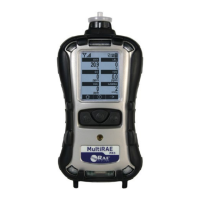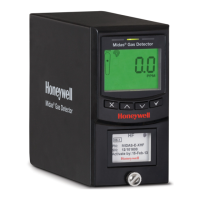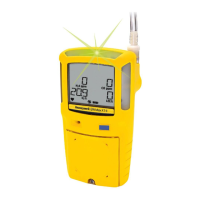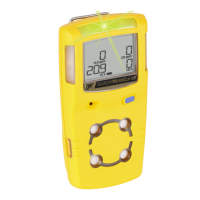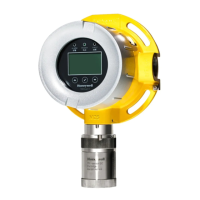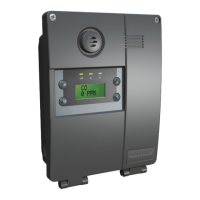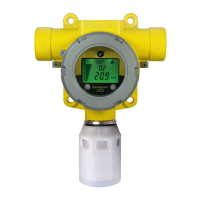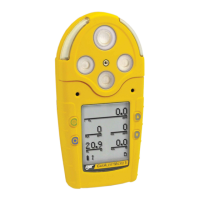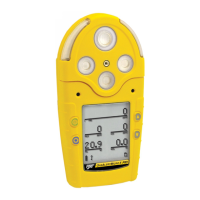Zero/Fresh Air Calibration
This operation sets the zero point of the sensor calibration curve for clean air. It should be
performed before other calibrations.
IMPORTANT!
Even though most toxic gas sensors can be zeroed in fresh air, sensors such as the CO
2
and
the parts-per-billion PID sensor for volatile organic compounds (VOCs) should not be zeroed in
fresh air. Both CO
2
gas and VOCs are normally present in ambient air, so zeroing these sensors
in ambient air will not allow for a true zero to be set for such sensors. The CO
2
sensor should be
zeroed in 99.9% nitrogen and the parts-per-billion PID sensor should be zeroed with ambient
air using a charcoal filter, a VOC zeroing tube, or a zero-grade air bottle.
Note: If you use a zero air or other gas cylinder, you must use the MultiRAE Calibration Adapter
(PN M01-3011-003 pack of 3 for pumped units). A calibration adapter is not necessary for
calibration in fresh air.
Zero Calibration for A CO
2
Sensor
IMPORTANT! If your MultiRAE is equipped with a CO
2
sensor, it must be zero calibrated using
100% Nitrogen (N
2
), which is inert, instead of fresh air or zero air.
Zero Calibration for Parts-Per-Billion (ppb) Sensor
IMPORTANT! The parts-per-billion PID sensor for volatile organic compounds (VOCs) should
not be zeroed in fresh air. VOCs are normally present in ambient air, so zeroing the sensor in
ambient air will not allow for a true zero to be set. The parts-per-billion PID sensor should be
zeroed with ambient air using a charcoal filter, a VOC zeroing tube, or a zero-grade air bottle.
Fresh Air Calibration
This procedure determines zero points of most sensors. The MultiRAE should be zero-
calibrated in clean air with 20.9% oxygen or with a cylinder of clean zero air.
At the Calibration menu, select “Fresh Air” by pressing [Y/+] once to enter fresh air calibration.
Honeywell MultiRAE Series™ 126 User Manual
